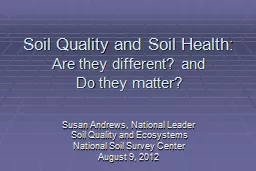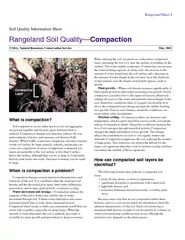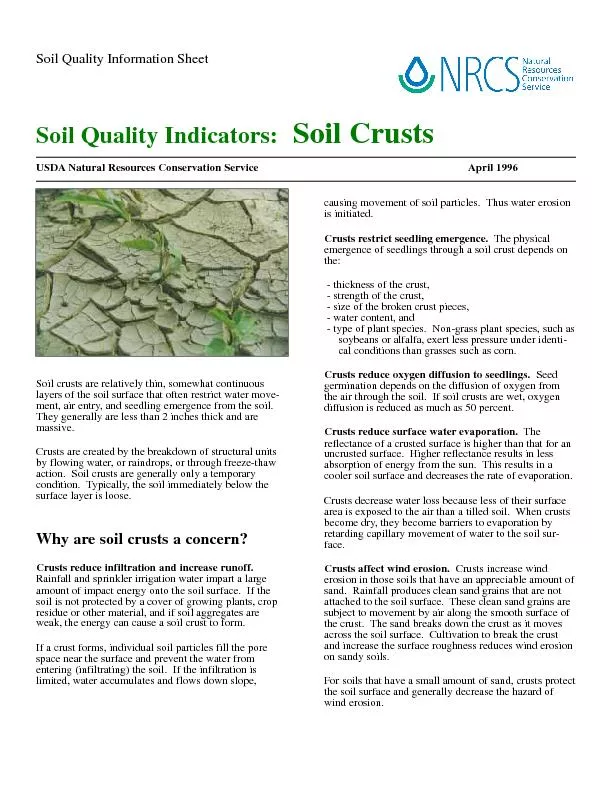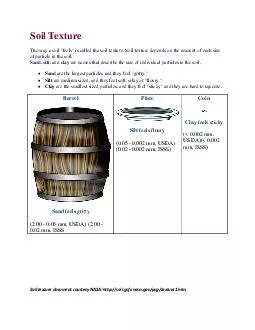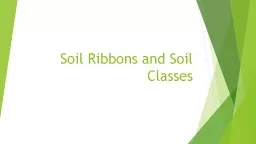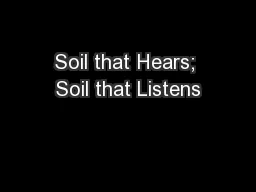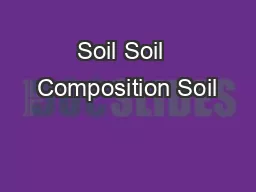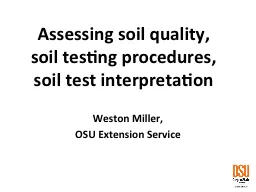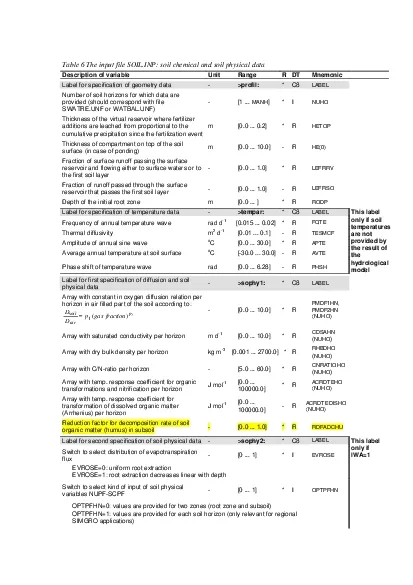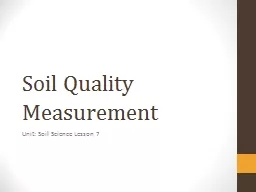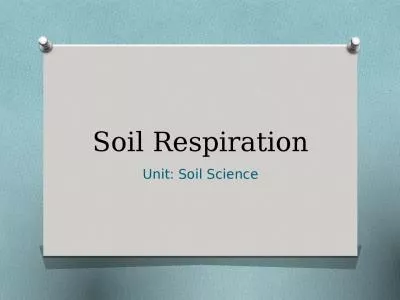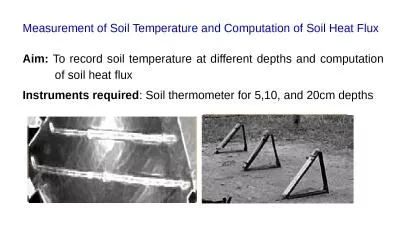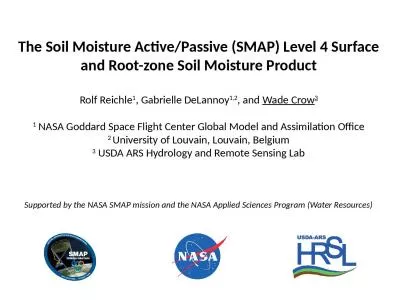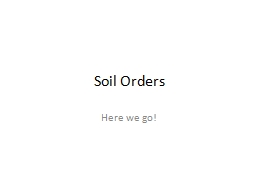PPT-Soil Quality and Soil Health:
Author : trish-goza | Published Date : 2018-09-21
Are they different and Do they matter Susan Andrews National Leader Soil Quality and Ecosystems National Soil Survey Center August 9 2012 Soil Quality Definitions
Presentation Embed Code
Download Presentation
Download Presentation The PPT/PDF document "Soil Quality and Soil Health:" is the property of its rightful owner. Permission is granted to download and print the materials on this website for personal, non-commercial use only, and to display it on your personal computer provided you do not modify the materials and that you retain all copyright notices contained in the materials. By downloading content from our website, you accept the terms of this agreement.
Soil Quality and Soil Health:: Transcript
Are they different and Do they matter Susan Andrews National Leader Soil Quality and Ecosystems National Soil Survey Center August 9 2012 Soil Quality Definitions fitness for use. The soil should be neutral or slightly acidic with pH 65 to 70 having high organic content Very light sandy soils are not recommended owing to their poor moisture holding properties Climate Light Light is one of the most important climatic factors i Compaction changes soil structure reduces the size and continuity of pores and increases soil density bulk density Wheel traffic or pressure weight per unit area exerted on the soil surface by large animals vehicles and people can cause soil compact USDA Natural Resources Conservation ServiceApril 1996What are soil crusts?ment, air entry, and seedling emergence from the soil.by flowing water, or raindrops, or through freeze-thawcondition. Typica texturecourtesyNASA: (Getandsample)soilhorizonsmallthesprayLetthebetweenthemoisturethroughout.OncetheStepStep(TestIf the soil: handswhenrubbedandStep themediumribbon Soil Ribbon and classes video . Write down the following questions on a . spare . piece of paper. . 1. What are the steps . for soil texture?. 2. . What . does the length of a ribbon tell you?. 3. . What . Matthew 13:1-23. Soil that Hears; Soil that Listens. 1. The Parable Presented. Soil that Hears; Soil that Listens. Matthew 13:1-9. That same day Jesus went out of the house and sat beside the sea. And great crowds gathered about him, so that he got into a boat and sat down. And the whole crowd stood on the beach. . Uppermost layer of earth’s crust that supports plants, animals and microbes. Soil Forming Factors. Parent Material. Time. Climate. Vegetation & Organisms. Topography. 1. Parent Material. Refers to the rock and minerals from which the soil derives.. s. oil test interpretation. Weston Miller, . OSU Extension Service. Preview of presentation. Safety precautions. General . soil quality assessment . How to take a soil test. What to test for. Interpreting results. Description of variable Unit Range R DT Mnemonic Label for specification of geometry data - x0000profil C8 LABELNumber of soil horizons for which data are provided should correspond with file SWATREU Unit: Soil Science Lesson . 7. Objectives. Define: soil quality, soil series, erosion. Describe two methods to assess soil quality. Create a model that represents signs of erosion. List and describe causes of erosion. Objectives. Define: soil respiration and soil microbes. Explain the role of soil respiration in determining soil health. Diagram the role of soil respiration in the cycle of life on earth. List and explain inherent factors that affect soil respiration. Aim: . To record soil temperature at different depths and computation of soil heat flux. Instruments required. : . Soil thermometer for 5,10, and 20cm depths. Computation of soil heat flux (. q. T. ). Rolf Reichle. 1. , Gabrielle DeLannoy. 1,2. , and . Wade Crow. 3. 1. NASA Goddard Space Flight Center Global Model and Assimilation Office. 2 . University of Louvain, Louvain, Belgium. 3. USDA ARS Hydrology and Remote Sensing Lab. Figure 3-24. Fig. 3-24a, p. 69. Mosaic of closely packed pebbles, boulders. Weak humus-mineral mixture. Dry, brown to reddish-brown with variable accumulations of clay, calcium and carbonate, and soluble salts.
Download Document
Here is the link to download the presentation.
"Soil Quality and Soil Health:"The content belongs to its owner. You may download and print it for personal use, without modification, and keep all copyright notices. By downloading, you agree to these terms.
Related Documents

